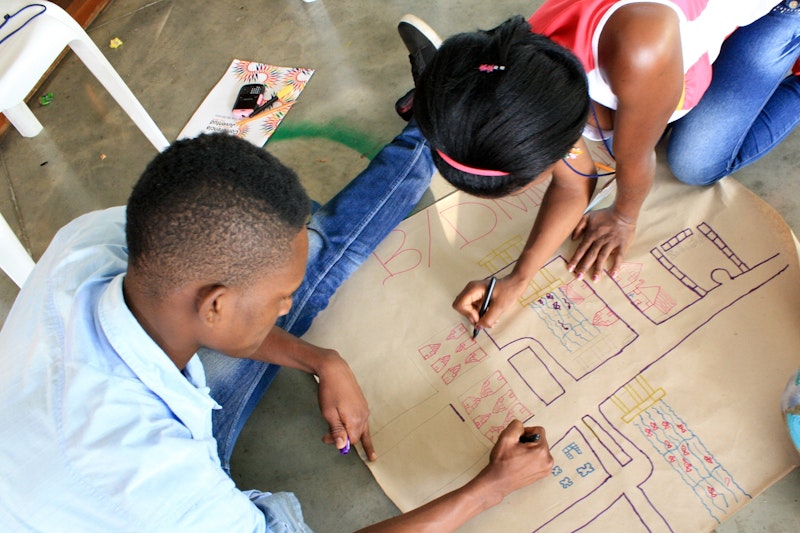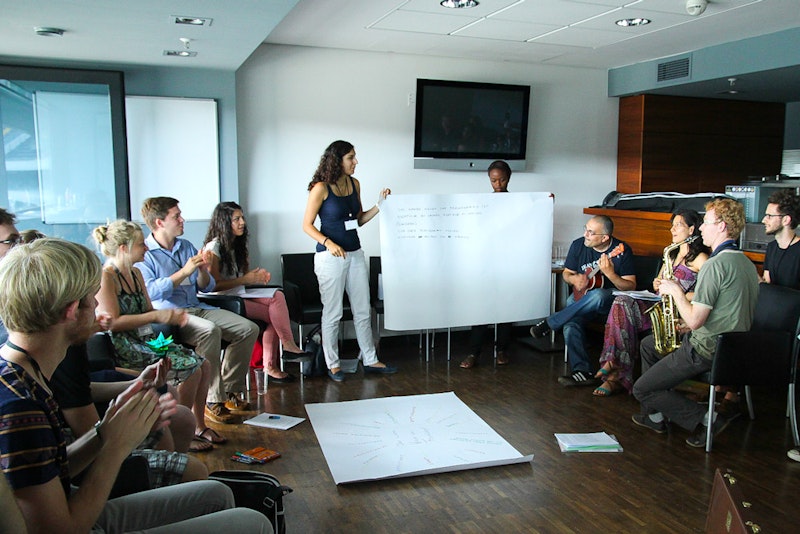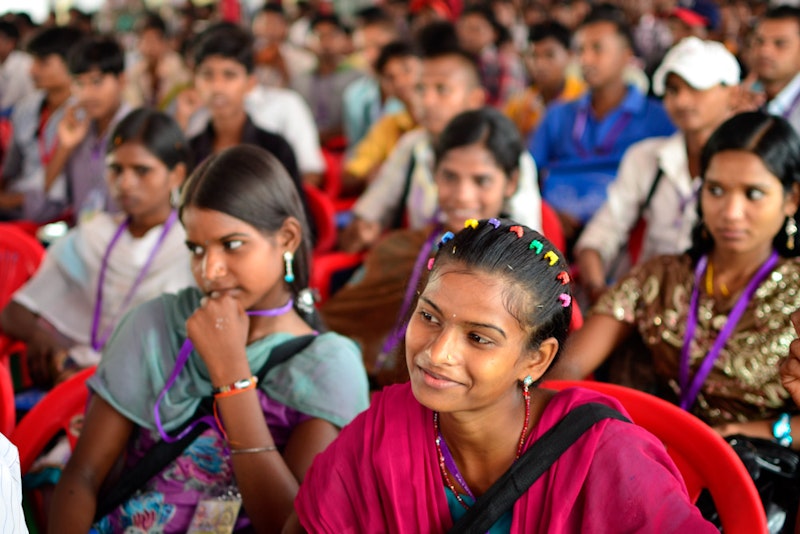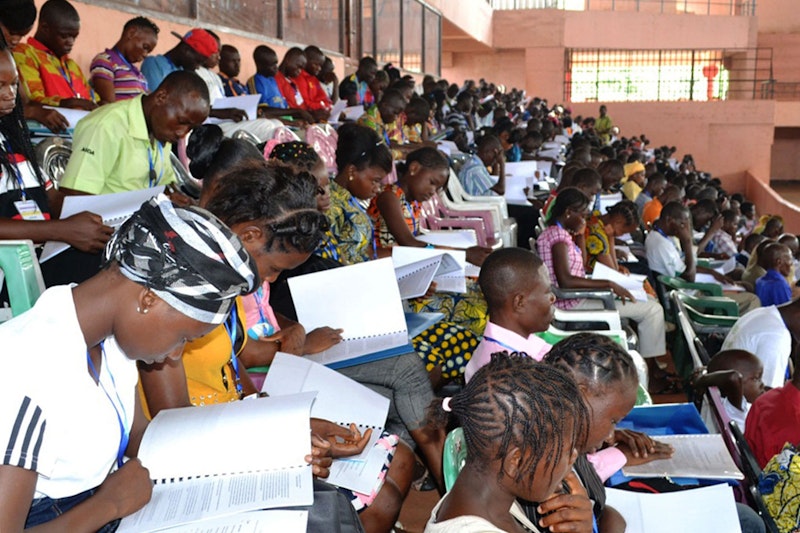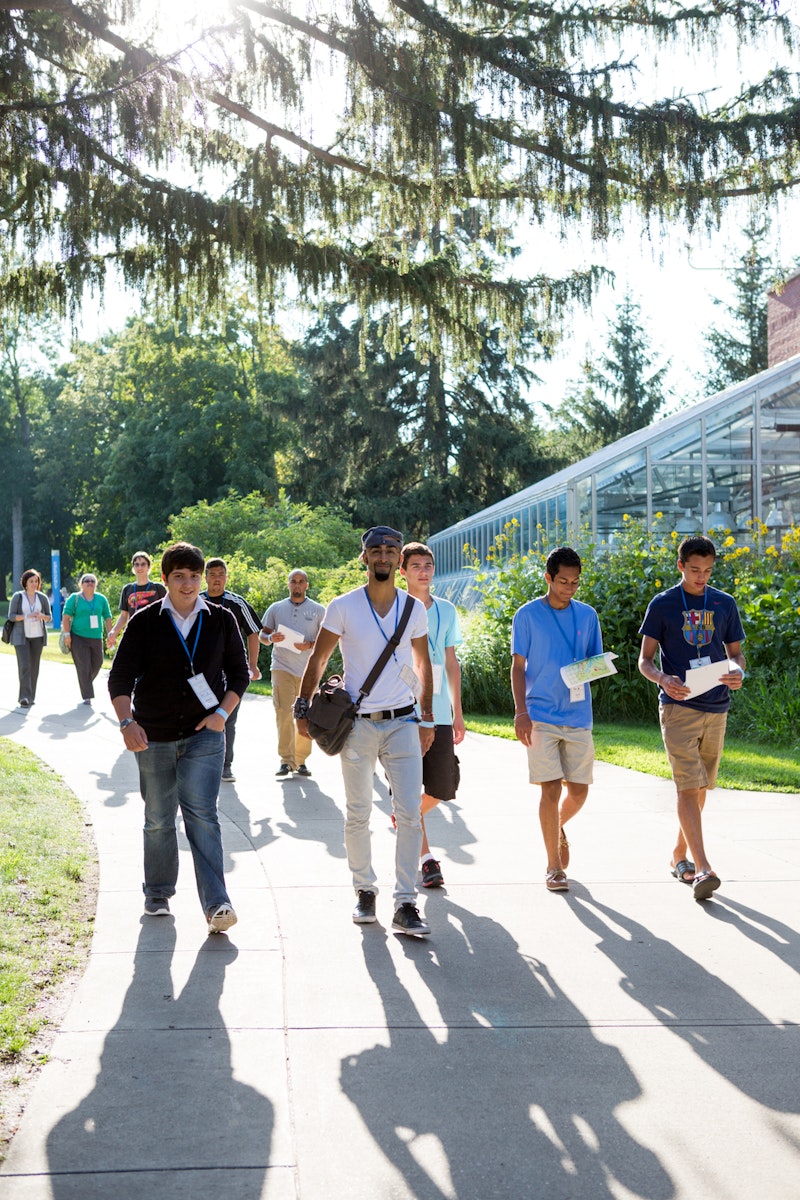What Bahá’ís Do
Youth
Materials from the youth conferences
The Period of Youth
Among the themes explored during the series of youth conferences held around the world in 2013 and the waves of subsequent gatherings was one specifically related to the potential and characteristics associated with the period of youth.
The following paragraphs have been extracted from the materials studied by the conferences’ participants on this subject.
The youth conferences gather young people of different ages and experiences. Many are teenagers who, through school, family, and community life, are preparing for the duties of adulthood. Others are older youth who may be in college or working, married or in the process of starting a family. For some, social conditions may have thrust on them duties of a much older age, and the survival of their families may already depend on them. Equally diverse are the communities they come from, ranging from the small villages of the world to the neighbourhoods of large urban centres with millions of inhabitants.
Regardless of their social situations, young people aspire for spiritual and intellectual growth and “to make a contribution to the fortunes of humanity”. They have many wonderful powers, and channelling them properly is an important concern, for when misdirected or manipulated by others, they can cause much social distress. Among the youth of the world are those alive to Bahá’u’lláh’s vision of a spiritually and materially prosperous world.
In selfless service to society is the possibility for both personal growth and enhancing capacity to contribute to social progress. “Service to humanity is service to God”, ‘Abdu’l-Bahá has stressed. Through directing their talents and abilities to the elevation of society, they “become the cause of the tranquillity of the world of creation”. As they infuse their day-to-day activities with a spirit of generous giving, and offer voluntary acts for the well-being of others, they attract the assistance and confirmations of God.
It is essential then that ever-growing numbers of those in the prime of their lives “steel themselves for a life of service” to society. Naturally, many matters occupy their time and energy: education, work, leisure, spiritual life, physical health. But they learn to avoid a fragmented approach to life that fails to see the connections among life’s various aspects. Such a disjointed view of life often makes individuals fall victim to the false choices suggested in questions such as whether one should study or serve, advance materially or contribute to the betterment of others, pursue work or become dedicated to service. Failure to approach one’s life as a coherent whole often breeds anxiety and confusion. Through service, young people can learn to foster a life in which its various aspects complement each other.
Assured of God’s unfailing blessings to those who arise to serve, youth look at the environments in which they interact with others—the family, the peer group, the school, the work place, the media, the community—and recognize the social forces that operate in them. Some of these forces, such as love for truth, thirst for knowledge, and attraction to beauty, impel them in their progress along a path of service. Other forces, for instance the spreading materialism and self-centredness, are destructive and by distorting young people’s view of the world impede individual and collective growth. As they advance in their endeavours to contribute to the construction of a better world, their capacity to draw on the spiritual and social forces that make them builders of civilization grows manifoldly.
Reflection questions
What are the positive or negative forces operating in environments in which youth interact? In what ways might these spaces influence young people?
How do you view the role of your generation in society? What high purpose shapes your individual and collective actions?
Discuss the positive effect that service has on spiritual and intellectual growth and on the capacity of the younger generation to contribute to social progress.

